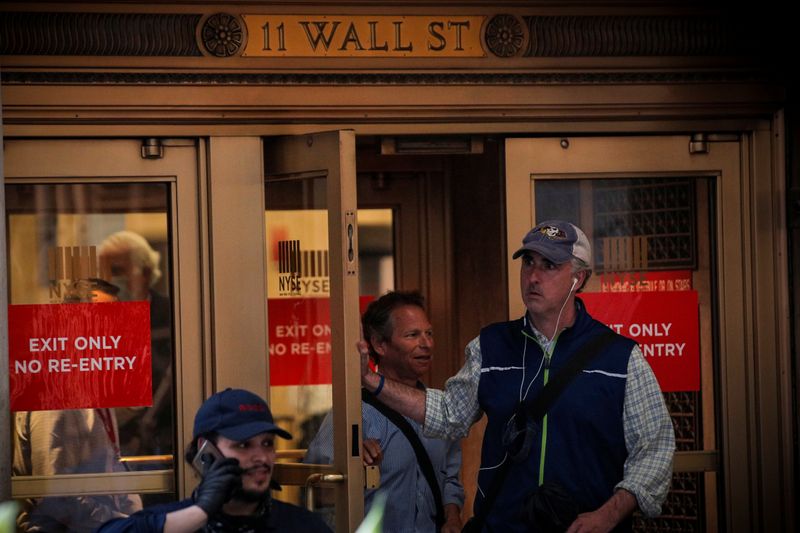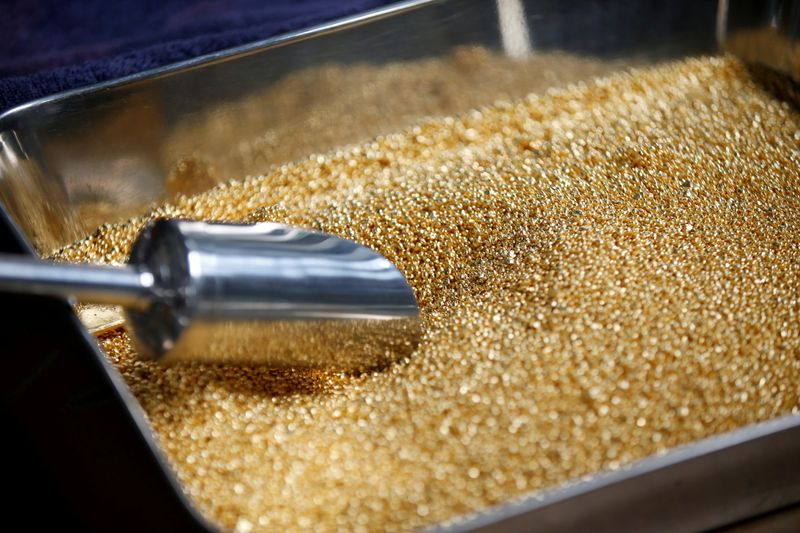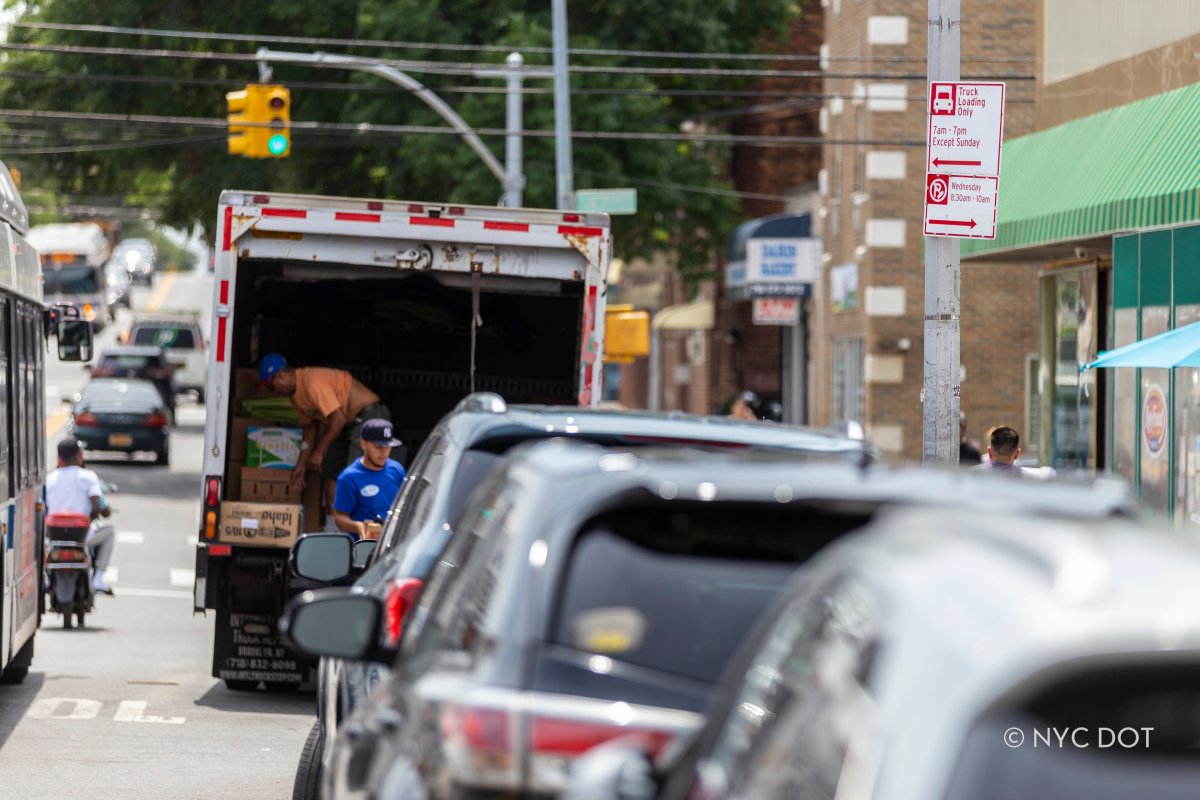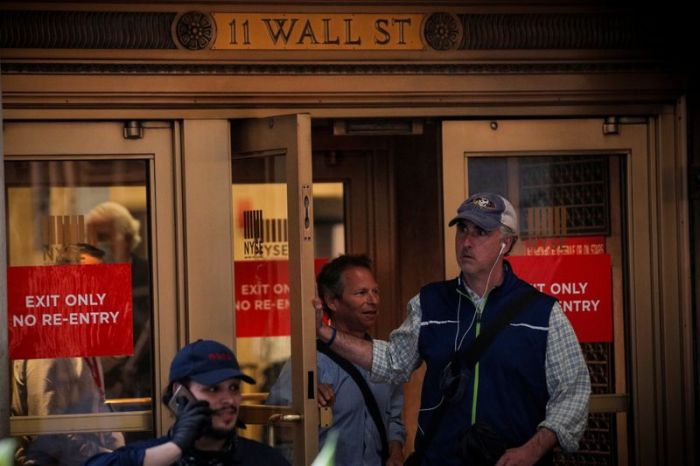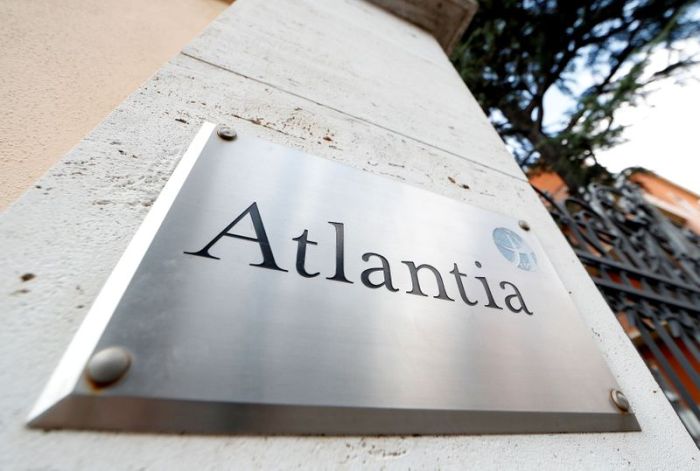NEW YORK (Reuters) – Rising concerns about a surge in coronavirus infections sent global equities and oil prices lower on Wednesday and pushed investors into perceived safe havens such U.S. Treasuries and gold, which hovered near its highest level in eight years.
Several U.S. states are posting record infections and the death toll in Latin America exceeded 100,000, according to a Reuters tally.
The New York Times reported the European Union was prepared to bar U.S. travelers, putting it in the same category as Brazil and Russia.
Adding to the gloom, European Central Bank chief economist Philip Lane warned the euro zone economy would need a long time to recover despite a string of solid data in recent days.
The United States is considering tariffs on $3.1 billion of exports from Britain, France, Spain and Germany, Bloomberg news reported, citing a notice published by the office of the U.S. Trade Representative.
“With rising daily COVID-19 cases in the U.S. remaining front page news, the headlines are proving to be a weighty burden to bear this morning,” Stephen Innes, chief global market strategist at AxiCorp, said.
MSCI’s gauge of stocks across the globe shed 2.33% following broad declines in Europe and Asia. The MSCI index has treaded water in recent weeks after jumping more than 40% from March lows on hopes the worst of the pandemic was over.
On Wall Street, the Dow Jones Industrial Average fell 708.72 points, or 2.71%, to 25,447.38, the S&P 500 lost 80.82 points, or 2.58%, to 3,050.47 and the Nasdaq Composite dropped 222.20 points, or 2.19%, to 9,909.17..
The International Monetary Fund said it now expects global output to shrink 4.9% this year, much sharper than the 3.0% contraction predicted in April. It also reined in its forecast for a 2021 recovery, calling for global growth at 5.4% compared to 5.8% in the April forecast.
The dollar index rose 0.52%, with the euro down 0.34% to $1.1268. The dollar is approximately 5% below three-year highs touched in March.
“The dollar and risk sentiment are likely to remain broadly negatively correlated, barring the U.S. displaying clear and enduring leadership in the global economic recovery, something hard to square with the grim U.S. news on COVID,” said Ray Attrill, head of FX strategy at NAB.
Spot gold dropped 0.2% to $1,762.81 after touching $1,773, its highest since October 2012, in Asian trading.. U.S. gold futures gained 0.23% to $1,776.10 an ounce.
Prices of benchmark 10-year U.S. Treasury notes edged higher, dropping their yields to 0.6839% from 0.709% late on Tuesday.
Concerns about high inventories pushed oil prices broadly lower.
U.S. crude fell 5.85% to $38.01 per barrel and Brent was at $40.11, down 5.91% on the day.
(Reporting by David Randall; Editing by Bernadette Baum; Editing by Nick Zieminski and David Gregorio)

